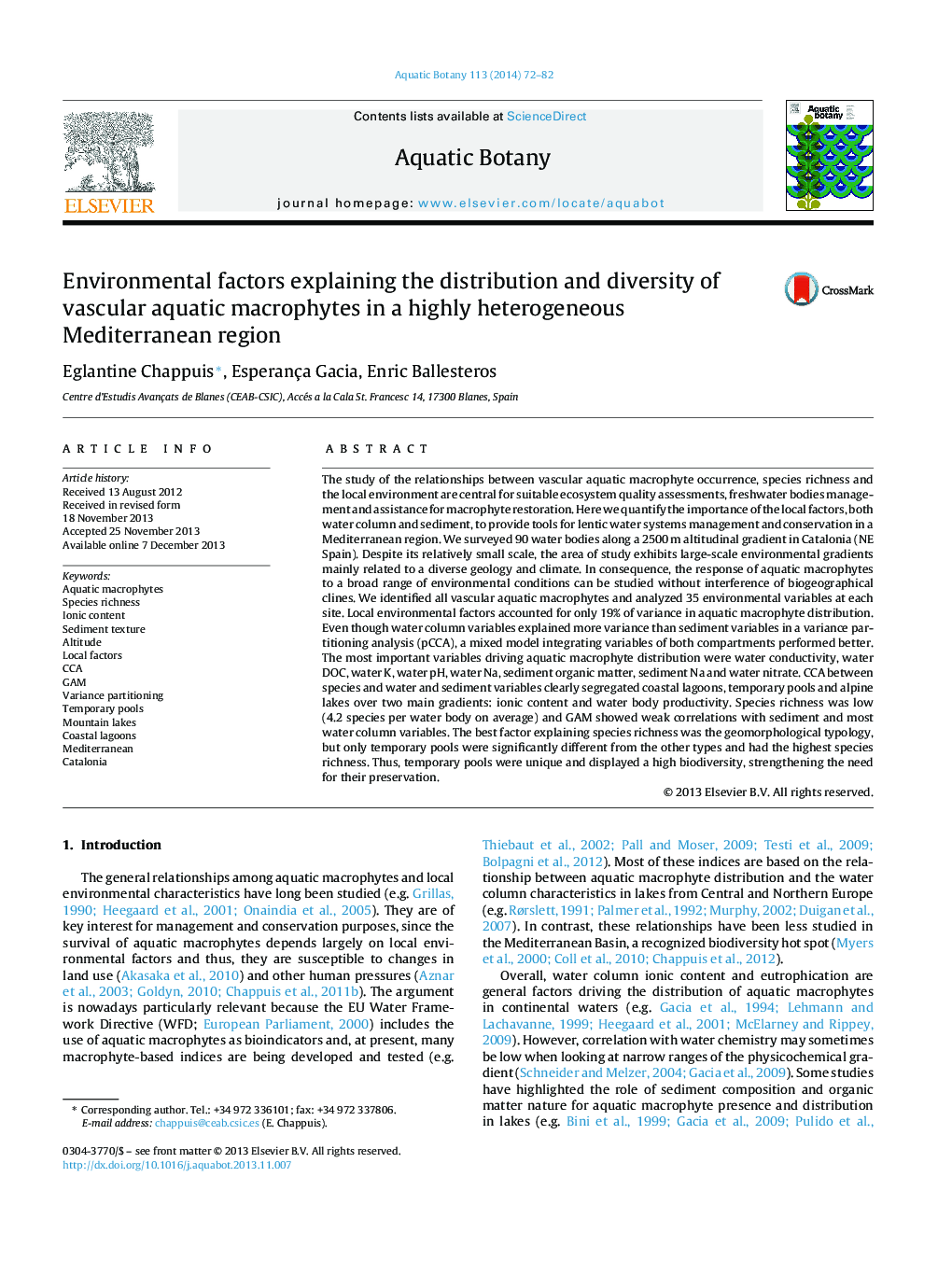| کد مقاله | کد نشریه | سال انتشار | مقاله انگلیسی | نسخه تمام متن |
|---|---|---|---|---|
| 4527871 | 1625829 | 2014 | 11 صفحه PDF | دانلود رایگان |
• Local abiotic factors explain 19% of aquatic macrophyte distribution.
• Both water column and sediment variables are important in explaining distribution.
• Main gradients are ionic content of the water and water body productivity.
• In general, species richness is low and shows weak correlations with abiotic variables.
• Only temporary pools exhibit high species richness (twofold increase).
The study of the relationships between vascular aquatic macrophyte occurrence, species richness and the local environment are central for suitable ecosystem quality assessments, freshwater bodies management and assistance for macrophyte restoration. Here we quantify the importance of the local factors, both water column and sediment, to provide tools for lentic water systems management and conservation in a Mediterranean region. We surveyed 90 water bodies along a 2500 m altitudinal gradient in Catalonia (NE Spain). Despite its relatively small scale, the area of study exhibits large-scale environmental gradients mainly related to a diverse geology and climate. In consequence, the response of aquatic macrophytes to a broad range of environmental conditions can be studied without interference of biogeographical clines. We identified all vascular aquatic macrophytes and analyzed 35 environmental variables at each site. Local environmental factors accounted for only 19% of variance in aquatic macrophyte distribution. Even though water column variables explained more variance than sediment variables in a variance partitioning analysis (pCCA), a mixed model integrating variables of both compartments performed better. The most important variables driving aquatic macrophyte distribution were water conductivity, water DOC, water K, water pH, water Na, sediment organic matter, sediment Na and water nitrate. CCA between species and water and sediment variables clearly segregated coastal lagoons, temporary pools and alpine lakes over two main gradients: ionic content and water body productivity. Species richness was low (4.2 species per water body on average) and GAM showed weak correlations with sediment and most water column variables. The best factor explaining species richness was the geomorphological typology, but only temporary pools were significantly different from the other types and had the highest species richness. Thus, temporary pools were unique and displayed a high biodiversity, strengthening the need for their preservation.
Journal: Aquatic Botany - Volume 113, February 2014, Pages 72–82
